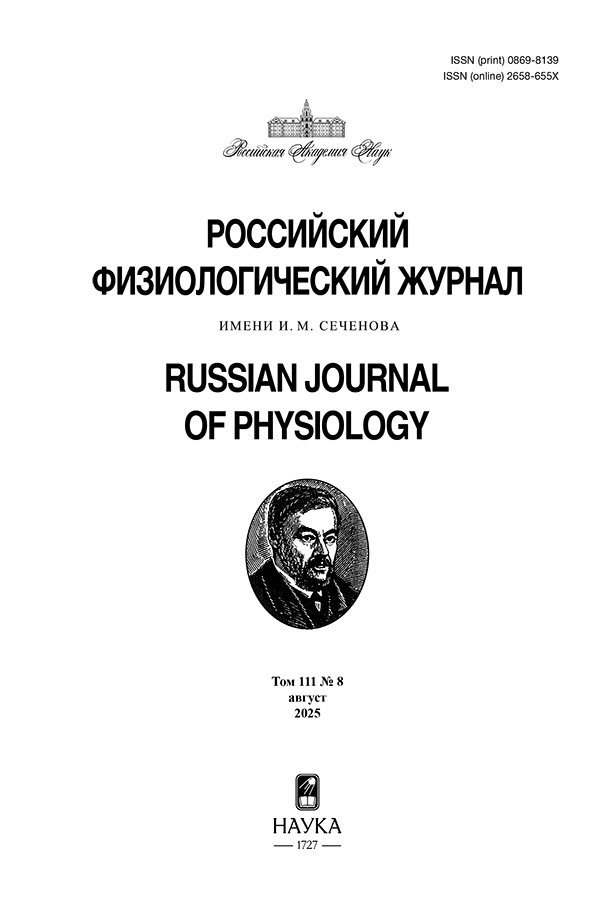Том 110, № 11 (2024)
ОБЗОРНЫЕ СТАТЬИ
Нейростероидный гормон витамин Д: современные горизонты исследований
Аннотация
Секостероидный гормон витамин Д является важнейшим витамином в организме, регулирующим метаболизм кальция и функционирование костно-мышечной, иммунной и сердечно-сосудистой систем. Витамин Д и его рецепторы также участвуют в регуляции многих процессов в нервной системе, позволяя считать его классическим нейростероидным гормоном. Недостаточность витамина Д ассоциирована с целым рядом заболеваний мозга, многие симптомы которых ослабляются при его введении. В работе рассмотрены клинические и доклинические данные последних лет о роли витамина Д и его рецепторов в функционировании мозга, а также новые перспективы исследований в данной области. Более полное понимание нейробиологии данного нейростероида и механизмов его действия может способствовать созданию новых подходов к лечению и профилактике расстройств мозга, связанных с нарушениями в системе витамина Д.
 1801–1823
1801–1823


К вопросу о функциональной гетерогенности микроглии и астроглии
Аннотация
Нейроглия является важным компонентом нервной системы и, помимо участия в поддержании гомеостаза нейронов, вовлечена в патогенез многих заболеваний мозга. Недавние данные о гораздо большей (чем считалось ранее) гетерогенности клеток глии поднимают вопрос о пересмотре традиционных классификаций микро- и астроглии с учетом ее многообразной роли в мозге. В работе рассматриваются межтаксонные особенности клеток микроглии и астроцитов человека, грызунов и рыб, которые могут обеспечить более полное понимание роли и гетерогенности нейроглии в мозге. Такие подходы позволят составить реалистичную картину об участии глиальных клеток в нормальных и патологических процессах нервной системы, что в свою очередь может способствовать выявлению новых терапевтических мишеней.
 1824-1845
1824-1845


Эндотелий, старение и сосудистые заболевания
Аннотация
Старение организма неразрывно связано с эндотелиальной дисфункцией и развитием сосудистых заболеваний. Однако возраст как таковой является лишь одним из факторов старения сосудов. Активные формы кислорода (АФК) играют важную роль в механизмах старения и гибели эндотелиальных клеток (ЭК). Старение ЭК может быть сопряжено с эндотелиальным перепрограммированием, когда клетки приобретают иммунологический фенотип или трансформируются в миофибробласты (эндотелиально-иммунный или эндотелиально-мезенхимальный переход соответственно). Атеросклероз – одно из наиболее известных заболеваний сосудов, которое инициирует другие, более тяжелые заболевания. Механизмы развития атеросклероза связаны не только с повышенным уровнем “плохого” холестерина, но также с десиалированием липопротеидов и эндотелия. Множество факторов, связанных с наследственностью, образом жизни, частотой и интенсивностью инфекционных заболеваний, обусловливают повреждение ЭК и раннее старение сосудов, что приводит к ускоренному старению организма, нарушению когнитивных функций, развитию нейродегенеративных заболеваний. В обзоре освещены некоторые из этих процессов, их хронологическая и функциональная взаимосвязь.
 1846–1874
1846–1874













